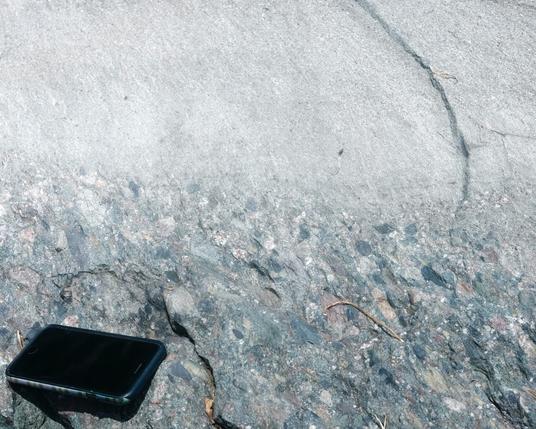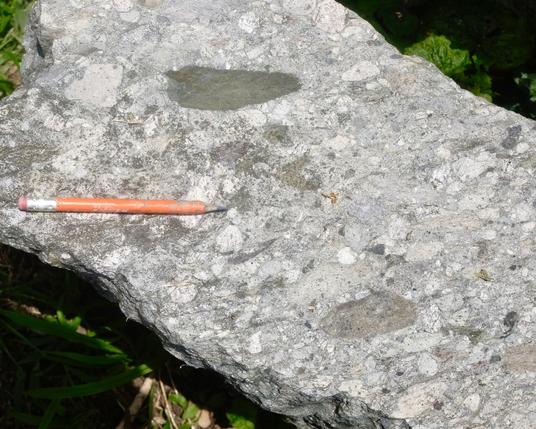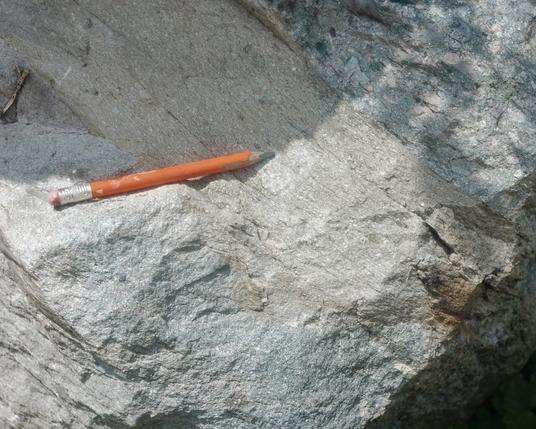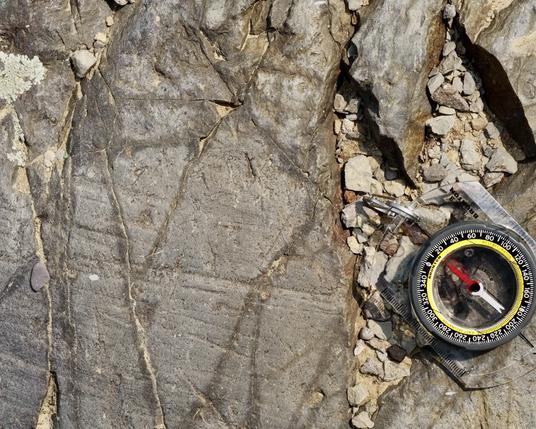A bizarre #sedimentary feature
Some layers in the #Neoproterozoic #Squantum Member of the #Roxbury #Conglomerate have been rolled up like a pie crust, into a tube. If this were a #tillite, as it once was thought to be, then it could have been caused by the drag of a #Gaskiers #glacier over the till. These rocks are mostly interpreted as deposited by submarine debris flows these days, in which case they could’ve been deformed during a slump and flow. Site of a field trip for #UMassBoston.








